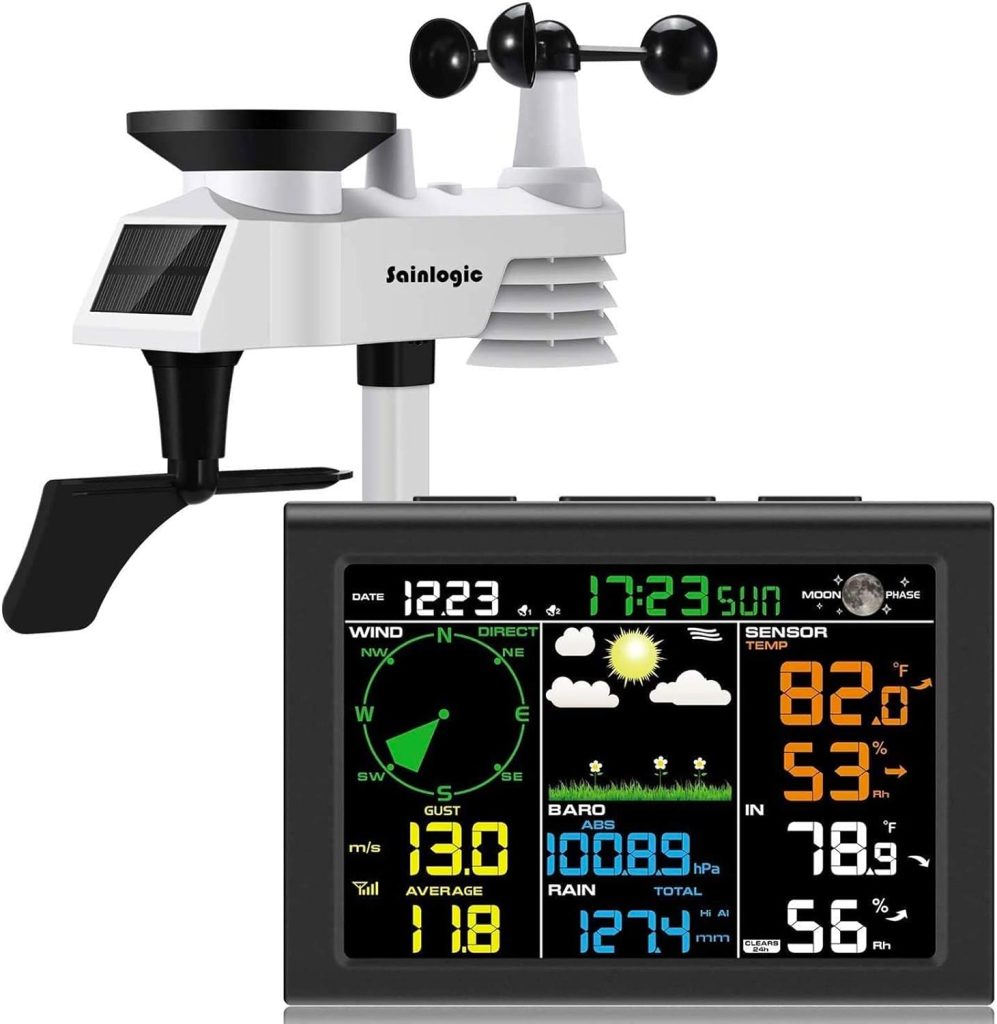Personal Weather Station
*As an Amazon Associate, I earn from qualifying purchases. Please see our disclosure to learn more.
A personal weather station is a device used to collect data about the weather conditions in a particular location.
Personal weather stations usually consist of various sensors that measure parameters such as temperature, humidity, atmospheric pressure, wind speed and direction, rainfall, and sometimes UV index and solar radiation.
There are various types of personal weather stations available, ranging from simple, affordable models to more advanced and expensive ones with additional features and capabilities. Many PWS systems are now connected to the internet. This allows users to remotely access real-time weather data from their stations using smartphones, tablets, or computers.
Personal Weather Station Uses in Gardening
Weather stations are useful tools for gardeners. Here are some of their benefits:
- Monitoring Conditions: They provide real-time data on temperature, humidity, rainfall, wind speed, and even UV index. This data can help gardeners make informed decisions about when to plant, water, or protect their plants from extreme conditions.
- Microclimate Awareness: Gardens often have microclimates, small areas with unique weather conditions due to factors like topography, sunlight exposure, and nearby structures. Weather stations allow gardeners to monitor these microclimates closely. This helps ensure that they can tailor their gardening practices to the specific needs of each area.
- Optimizing Irrigation: By tracking rainfall and soil moisture levels, gardeners can optimize their irrigation schedules. Overwatering can lead to root rot and other issues, while underwatering can stress plants. Weather stations help strike the right balance by providing accurate data on soil moisture levels and rainfall.
- Preventing Frost Damage: Many personal weather stations come with frost alarms or temperature alerts. They provide warnings when temperatures are expected to drop to crucial levels. This allows gardeners to take preventive measures such as covering sensitive plants or bringing them indoors.
- Seasonal Planning: A personal weather station can help gardeners plan their planting schedules more effectively. By tracking historical weather data, gardeners can identify patterns and trends This allows them to make informed decisions about when to start seeds, transplant seedlings, or harvest crops.


